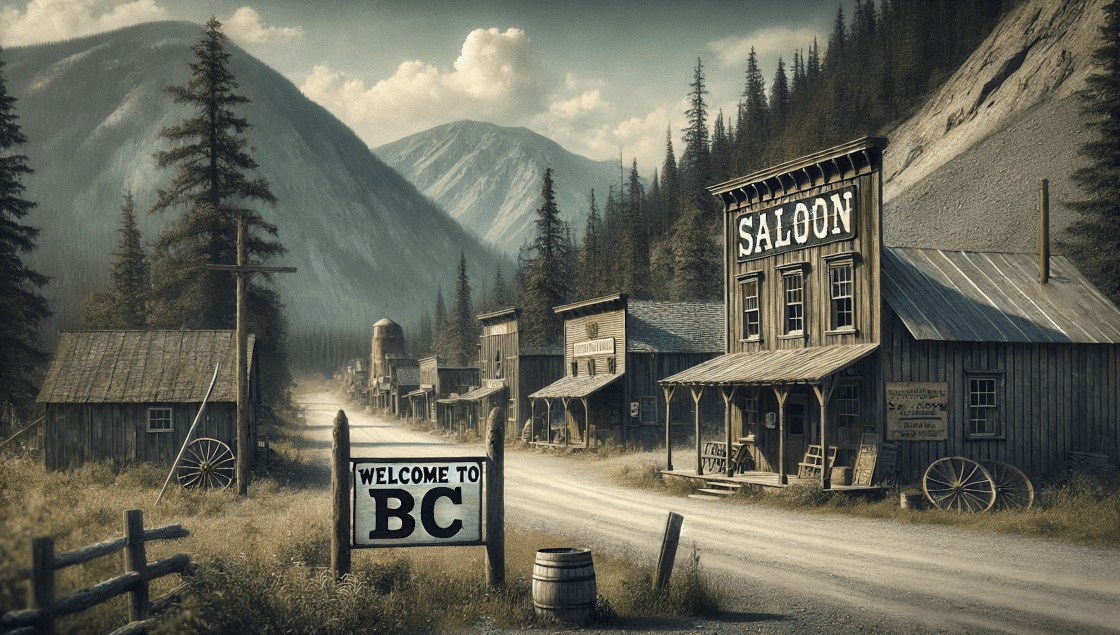As the landscape of British Columbia rapidly evolves, many of its historic landmarks are disappearing, leaving behind only faint echoes of the province’s rich and varied history. Michael Kluckner, an award-winning author and artist, has dedicated over two decades to documenting these vanishing pieces of British Columbia’s past through his watercolors and research, capturing the essence of what he terms “roadside memory” or “visual memory.” His work is a poignant reminder of the impermanence of the man-made world and the importance of preserving our cultural heritage.
The Origins of a Passionate Project
Kluckner’s journey began in the mid-1990s when he noticed that many of the familiar roadside icons he had seen during his travels were beginning to disappear. Whether it was an old farmhouse in the Kootenays, a decaying lodge on Savary Island, or an abandoned church in a forgotten town, these places were silently fading away. This realization sparked his desire to document these sites before they vanished entirely. By 1999, Kluckner had begun posting his watercolor sketches online, accompanied by any historical information he could uncover.
His website, Vanishing British Columbia, quickly gained traction, attracting history enthusiasts, genealogists, and curious locals. Through collaborations with CBC Radio’s BC Almanac program and contributions from the public, Kluckner expanded his research, uncovering new sites and stories. One particularly notable aspect of his work includes documenting the lives of Japanese-Canadians during and after World War II, a chapter of history that has often been overlooked.
A Diverse Landscape of Memories
The places Kluckner has documented range from “farmscapes” and “fishscapes” to abandoned motels, railway relics, and company towns. Each site tells a unique story about British Columbia’s past, offering glimpses into the lives of those who lived and worked in these remote areas.
For instance, in North Bend, Kluckner found a wealth of material related to the Grand Trunk Pacific Railway, which played a crucial role in the development of the province’s interior. Similarly, in the Okanagan, he documented Spotted Lake near Osoyoos, a site of cultural significance for both Indigenous peoples and settlers.
One of the most compelling stories Kluckner uncovered was that of the Japanese-Canadian families who were interned during World War II. While researching the Shuswap area, he discovered that a Japanese-Canadian family had lived just a few miles from where he spent his childhood summers. This connection led him to learn more about the coal kilns built by Japanese-Canadians on Mayne Island and other southern Gulf Islands, remnants of a painful yet important chapter in Canadian history.
The Importance of Roadside Memory
Kluckner’s work underscores the importance of “roadside memory,” a concept that refers to the historical and cultural significance of the places we pass by every day. As these landmarks disappear, so too does our connection to the stories and events that shaped British Columbia.
One example is the Savary Lodge on Savary Island, built in 1934 by A.E. McMaster, the general manager of the Powell River Company. Once a bustling retreat, the lodge now stands as a relic of a bygone era, its history slowly being forgotten as nature reclaims the site.
In many cases, these sites have already disappeared since Kluckner painted them, further emphasizing the urgency of his work. His collection of watercolors and historical records is becoming an informal historical atlas, preserving the “look and substance of settlement and abandonment peculiar to British Columbia.”
The Future of Vanishing British Columbia
Kluckner’s project, which began as a personal journey to document the places he loved, has grown into a significant historical record. His book, Vanishing British Columbia, published by UBC Press/University of Washington Press, is a testament to his dedication to preserving the province’s disappearing heritage.
Despite the increasing interest in his work, Kluckner remains concerned about the future of British Columbia’s historic landscape. He believes that much of it will disappear within the next generation, as awareness of its value may not arise in time to save these sites from obliteration. Without these imprints of settlement on the landscape, the stories that make up the province’s non-Indigenous history will become harder to tell and even harder to make relevant to future generations.
A Call to Action
As Kluckner prepares to present his work at the Powell River Public Library in August 2024, he continues to receive inquiries from people researching specific places or individuals, many of whom provide additional information or corrections to his work. This ongoing process of discovery highlights the collaborative nature of his project, where public contributions play a crucial role in preserving British Columbia’s history.
For readers and residents of British Columbia, Kluckner’s work serves as both a reminder and a call to action. It urges us to pay attention to the places we pass by, to recognize their historical significance, and to advocate for their preservation. As Kluckner’s paintings and research show, once these sites are gone, they are gone forever, taking with them the stories and memories that connect us to our past.
Closing Thoughts
Michael Kluckner’s Vanishing British Columbia is more than just a collection of beautiful paintings; it is a vital record of a disappearing world. As British Columbia continues to change, his work will stand as a reminder of the importance of preserving our roadside memories, ensuring that future generations can understand and appreciate the rich history that has shaped this province.
For those interested in learning more about Kluckner’s work or contributing to his ongoing project, his website remains an invaluable resource, offering a glimpse into the past and a way to engage with the history that surrounds us.


